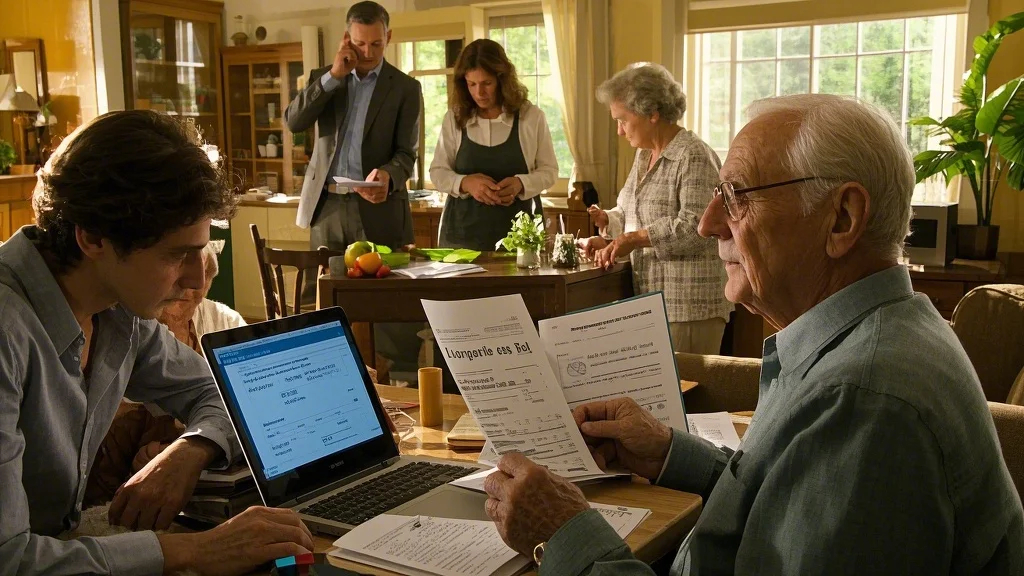Understanding Your Family’s Life Insurance Needs
Choosing the right life insurance protection for your family begins with a clear assessment of your unique financial situation and future obligations. Most families underestimate their actual coverage needs, focusing only on immediate debts while neglecting long-term expenses like college tuition or surviving spouse retirement needs. A comprehensive evaluation should account for outstanding mortgages, consumer debts, income replacement for a set number of years, educational costs, and final expenses. Life insurance quotes can vary dramatically based on these factors, which is why getting personalized estimates rather than relying on industry averages proves essential. Families with special needs dependents or complex estate situations often require additional specialized planning beyond standard term policies.
The timing of your life insurance purchase significantly impacts both availability and cost. Younger applicants generally secure the most favorable life insurance quotes, as insurers price policies based on current health and age. However, even older individuals or those with pre-existing conditions can find appropriate coverage by working with brokers who specialize in high-risk underwriting. An often-overlooked consideration involves future insurability – purchasing a convertible term policy early allows you to switch to permanent coverage later without additional medical underwriting, regardless of health changes. Families should also consider how their needs might evolve with second homes, business ventures, or blended family situations that could necessitate policy adjustments down the road.
Navigating Life Insurance Options for Seniors
Selecting the best life insurance for seniors requires understanding how coverage needs change during retirement years. While income replacement becomes less critical for retirees, other financial obligations like final expenses, medical bills, and legacy planning take priority. Many seniors make the mistake of either maintaining excessive coverage from their working years or dropping coverage entirely without considering these specialized needs. Guaranteed acceptance whole life policies have gained popularity among older applicants, though their higher premiums and graded death benefits require careful evaluation against alternatives like simplified issue term policies that might offer better value.
The best life insurance for seniors often involves balancing cost with certainty of payout. Term policies become prohibitively expensive in advanced ages, making permanent insurance solutions more practical for those who can qualify medically. Burial insurance policies offer small face amounts specifically designed to cover final expenses without burdening survivors. An often-overlooked strategy involves using existing assets to purchase a single premium whole life policy, which immediately creates a death benefit while preserving other estate assets. Seniors should be particularly wary of policies marketed through television or direct mail that often carry restrictive terms and high commissions – working with an independent broker typically yields better options tailored to individual health and financial circumstances.

Integrating Homeowners Insurance with Your Financial Plan
While reviewing homeowners insurance rates, most policyholders focus solely on premium costs without considering how coverage integrates with their broader financial strategy. Standard policies contain potentially costly gaps in protection that can leave families unexpectedly exposed after major disasters. The rising frequency of climate-related events has made extended replacement cost endorsements essential in many regions, while inflation has rendered many older policies dangerously underinsured. Smart homeowners regularly review not just their premium expenses but also the specific perils covered, special limits on valuables, and liability protection levels that could safeguard family assets.
Comparing homeowners insurance rates effectively requires understanding what variables insurers actually consider when pricing policies. Beyond the obvious factors like home value and location, insurers scrutinize credit-based insurance scores, claims history, and even the home’s plumbing and electrical systems. Many homeowners could qualify for significant discounts by bundling policies, installing protective devices, or agreeing to higher deductibles. An often-missed opportunity involves reevaluating coverage after major home improvements or paying down mortgages, as these events can sometimes trigger eligibility for better rates or terms. Consumers should request updated quotes at least biennially, as insurer appetites for certain risks change frequently in today’s volatile property insurance market.
The Critical Role of Renters Insurance in Family Protection
Obtaining renters insurance quotes represents one of the most cost-effective ways to protect family assets, yet remains one of the most overlooked forms of coverage. Standard policies typically provide three crucial protections: personal property coverage for belongings against theft or damage, liability protection if someone gets injured in your residence, and additional living expenses if your rental becomes uninhabitable. What surprises many renters is how affordable comprehensive coverage can be – often less than the monthly cost of a streaming service subscription. Young families especially benefit from securing coverage early, as it establishes an insurance history that can lead to better rates on future homeowners policies.
When comparing renters insurance quotes, pay particular attention to whether policies use actual cash value or replacement cost valuation for personal property. The difference can be substantial when making claims for older items. Many renters mistakenly assume their landlord’s insurance covers their personal belongings, not realizing it only protects the building structure itself. Another common oversight involves failing to document possessions through photos or videos before a loss occurs. Renters with expensive electronics, musical instruments, or jewelry should consider scheduled personal property endorsements, as standard policies impose limits on these categories. As families accumulate more assets over time, they should review coverage limits annually to avoid being underinsured after major purchases.
Extending Protection with Umbrella Insurance Policies
Umbrella insurance policies provide an extra layer of liability protection that kicks in when underlying homeowners or auto insurance limits get exhausted. In today’s litigious environment, standard liability limits often prove inadequate when facing serious accidents involving long-term medical care or wrongful death claims. What makes umbrella coverage particularly valuable is its broad application – it can protect against defamation claims, landlord liability, or even false arrest allegations that standard policies exclude. Families with teenage drivers, swimming pools, dogs, or public profiles find these policies especially crucial, though virtually any household with assets to protect could benefit from the additional security.
Reviewing umbrella insurance policies requires understanding how they interact with your underlying coverage. Most insurers require specific minimum liability limits on your auto and homeowners policies before issuing an umbrella. The cost-effectiveness of umbrella coverage improves dramatically as you increase coverage amounts – the premium difference between $1 million and $5 million in coverage often surprises consumers with its modest incremental cost. An often-missed consideration involves whether the policy covers defense costs outside the liability limit or erodes the total amount available. Families with international exposure should verify whether their umbrella policy provides worldwide coverage, as some restrict protection to incidents within the United States.
Crafting a Comprehensive Family Protection Portfolio
Building complete financial protection for your family involves more than just purchasing individual policies – it requires creating an integrated safety net where coverage layers work together seamlessly. Start by mapping all potential risks to family assets and income streams, then identify which insurance products address each exposure. A common mistake involves having overlapping coverage in some areas while leaving dangerous gaps in others. For example, some disability policies duplicate workers’ compensation benefits while failing to cover non-work injuries adequately. Working with a trusted insurance professional who can analyze your entire financial picture often reveals these coordination issues that DIY shoppers miss.
Regular policy reviews become essential as family circumstances evolve. The birth of children, inheritance of assets, career changes, or relocation to different states all trigger the need for coverage reassessment. Many families benefit from creating an “insurance calendar” that schedules periodic reviews of each policy type throughout the year rather than trying to evaluate everything simultaneously. Digital tools like home inventory apps or cloud-based policy organizers help maintain organized records that prove invaluable when filing claims. Remember that insurance represents just one component of a complete financial plan – proper integration with your investment strategy, estate planning documents, and emergency savings creates truly robust family protection.
Implementing Cost-Effective Insurance Strategies
While comprehensive coverage is essential, overpaying for insurance unnecessarily drains family resources. Strategic approaches like opting for higher deductibles on policies where you can comfortably absorb smaller losses can yield substantial premium savings. Many families discover they’re carrying redundant coverage – for example, paying for rental car coverage on auto policies when their credit card already provides similar protection. Bundling multiple policies with one insurer often unlocks discounts, though it’s wise to comparison shop individual components periodically to ensure you’re still getting competitive homeowners insurance rates or renters insurance quotes within the package.
Another cost-saving strategy involves aligning policy terms with your actual risk timeline. Young families might choose 30-year term life policies to cover child-rearing years, then transition to smaller permanent policies later when needs decrease. Paying premiums annually rather than monthly often comes with significant discounts – sometimes up to 10% of the total cost. For health-conscious individuals, participating in insurer wellness programs can yield better life insurance quotes while improving personal health outcomes. The most sophisticated approach involves treating insurance as a dynamic component of your financial plan that adjusts as your assets grow and liabilities change, rather than a set-it-and-forget-it purchase.



